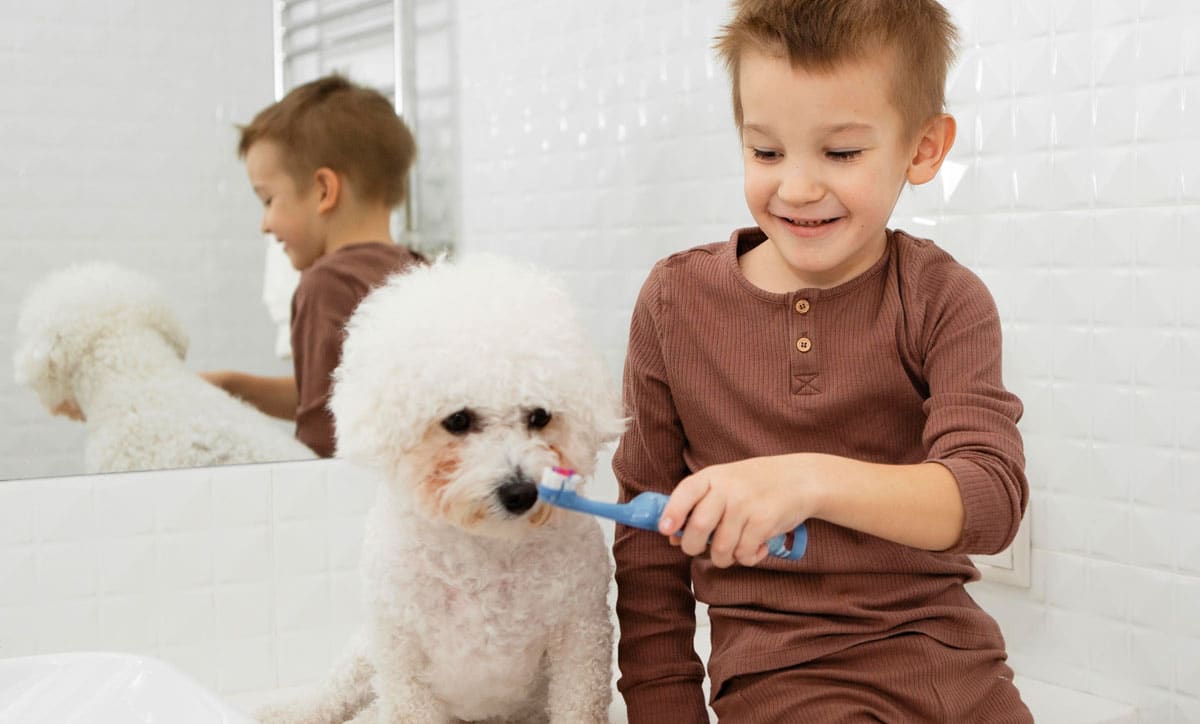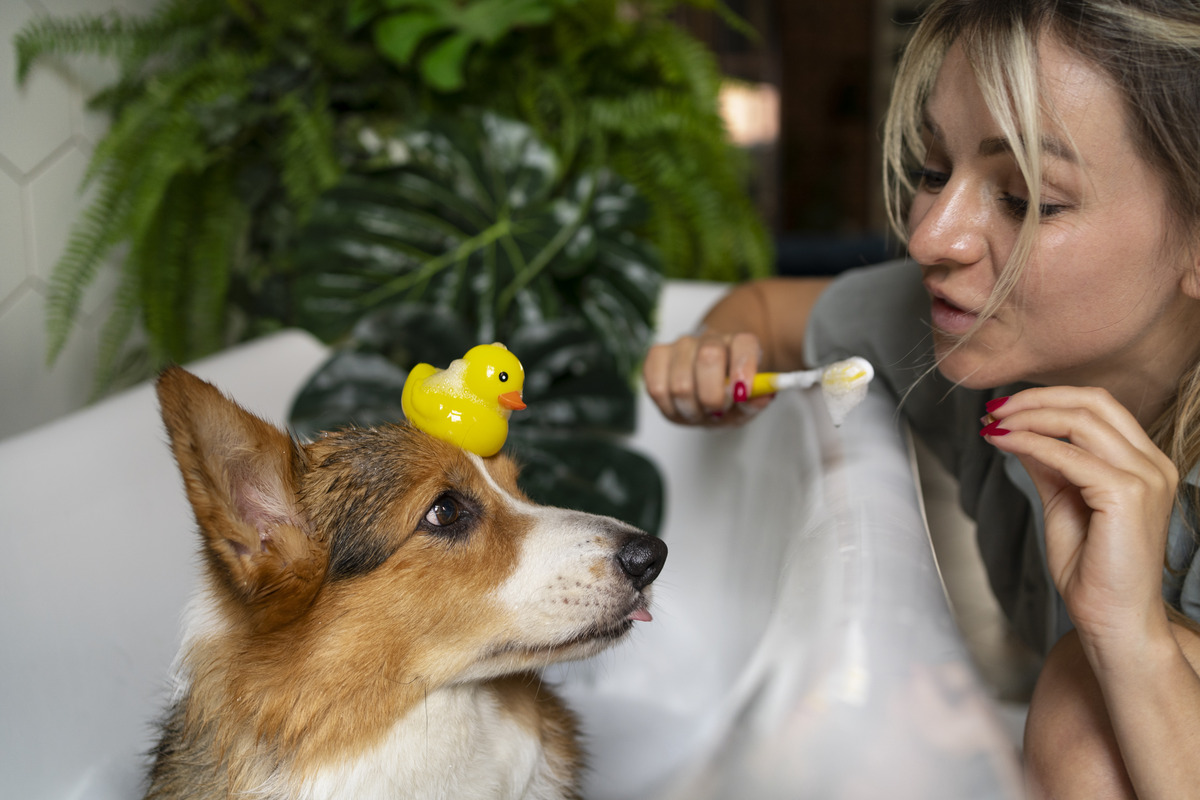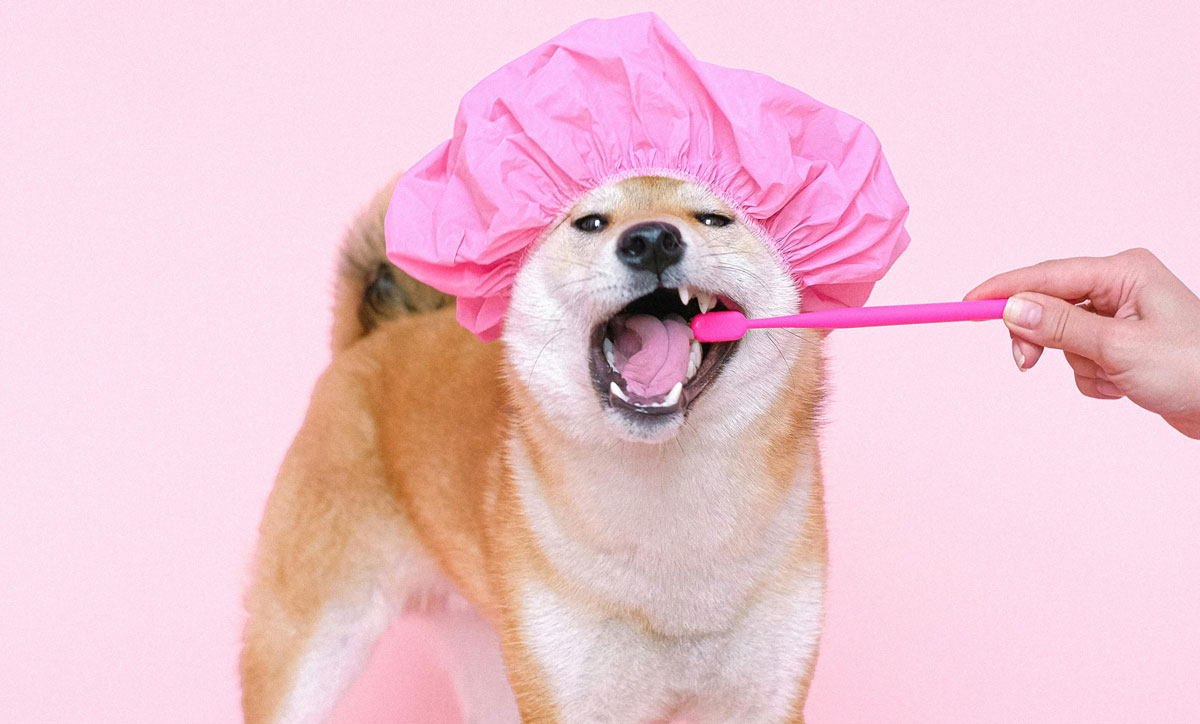
How to Brush Your Pet’s Teeth: Step-by-Step Guide
Just like you, your pets also need dental hygiene! Poor oral hygiene can lead to plaque, gum disease, and tooth decay. It can also cause serious health issues like heart disease. Professional cleanings are helpful. However, it’s also key to brush your pet’s teeth at home. This keeps their dental health in check. In this guide, we’ll help you brush your pet’s teeth. You’ll learn how to care for your dog’s and cat’s dental health easily. We’ll also share the best pet toothpaste for you to use.
Seeing your pet’s dental needs and setting up a routine can help them live longer and happier. You will learn about alternative dog dental care. Also, you’ll discover common mistakes pet owners make. Finally, find out how to make the experience enjoyable for your dog.
Why Brushing Your Pet’s Teeth is Important
Many pet owners underestimate the importance of dental hygiene for their furry friends. Here are some key reasons why you should make tooth brushing a routine:
- Prevents Bad Breath: Regular brushing reduces tartar buildup and eliminates foul-smelling bacteria.
- Reduces the Risk of Dental Diseases: Gingivitis, periodontal disease, and tooth loss are common in pets with poor dental care.
- Promotes Overall Health: Bacteria from the mouth can spread to major organs, leading to kidney, liver, or heart disease.
- Saves Money on Veterinary Bills: Preventative dental care reduces the need for expensive professional cleanings and extractions.
- Enhances Your Pet’s Comfort: Healthy teeth and gums prevent pain and difficulty eating.
- Increases Lifespan: Good oral hygiene can contribute to a longer and healthier life for your pet.
How Often Should You Brush Your Pet’s Teeth?

The ideal frequency for brushing depends on your pet’s lifestyle and diet:
- Daily brushing is best to maintain optimal dental health.
- Three to four times a week can still prevent tartar and plaque buildup.
- Occasional brushing is better than none. Professional cleanings may be required more frequently.
Choosing the Right Dental Tools for Your Pet
1. Pet Toothbrush
- Use a soft-bristled toothbrush designed for pets.
- Fingerbrushes are ideal for beginners and smaller pets.
- Avoid using human toothbrushes as they can be too harsh.
2. Pet-Friendly Toothpaste
- Use enzymatic toothpaste made specifically for dogs or cats.
- Do not use human toothpaste, as it contains fluoride and xylitol, which are toxic to pets.
- Available flavours like poultry, beef, and peanut butter can make brushing more enjoyable.
3. Dental Chews and Water Additives
- While not a substitute for brushing, dental chews help reduce plaque.
- Water additives can help maintain oral hygiene between brushings.
Step-by-Step Guide to Brushing Your Pet’s Teeth
Step 1: Get Your Pet Comfortable
- Choose a quiet, relaxed environment to avoid distractions.
- Gently handle your pet’s mouth and lips to get them used to the sensation.
- Offer treats or praise to create a positive association.
Step 2: Introduce the Toothpaste
- Let your pet taste a small amount of pet toothpaste.
- Use your finger to gently rub the toothpaste along the gums before introducing the best pet toothbrush.
Step 3: Start Brushing
- Hold the toothbrush at a 45-degree angle to the teeth.
- Begin with gentle circular motions, focusing on the outer surfaces.
- Brush for about 30 seconds per side.
- Pay special attention to back teeth, as they are more prone to plaque buildup.
Step 4: Be Patient and Reward Your Pet
- Gradually increase brushing time over several sessions.
- Reward your pet with praise, playtime, or a treat after each brushing session.
Tips for Brushing Different Pets

Brushing a Dog’s Teeth
- Start when they are puppies to make it a lifelong habit.
- Use a chew toy after brushing to help remove loose plaque.
- Larger dog breeds may require longer brushes to reach the back teeth.
- Smaller breeds are more prone to dental disease and may require more frequent brushing.
Brushing a Cat’s Teeth
- Cats can be more resistant, so start slow.
- Use a smaller finger brush or gauze pad when doing cat teeth cleaning.
- Try flavoured toothpaste to encourage cooperation.
- Focus on the canines and molars, as these teeth accumulate the most plaque.
Common Mistakes to Avoid
- Skipping Brushing Due to Resistance: Be patient and gradually increase your pet’s tolerance.
- Using Human Toothpaste: It contains toxic ingredients for pets.
- Brushing Too Hard: Gentle brushing is key to avoiding gum irritation.
- Not Brushing Regularly: Irregular brushing can lead to tartar buildup and gum disease.
- Ignoring the Back Teeth: These areas accumulate plaque the fastest.
Alternative Dental Care Methods
If your pet refuses brushing, consider these options:
- Dental wipes for gentle plaque removal.
- Dental chews that mechanically clean teeth while chewing.
- Professional veterinary cleanings for pets with severe tartar buildup.
- Water additives designed to break down plaque and freshen breath.
- Raw bones (vet-approved) that naturally clean teeth while chewing.
Signs of Dental Problems in Pets
Regular brushing can help prevent dental issues. It’s essential to watch for signs of oral health problems, including:
- Persistent bad breath
- Yellow or brown tartar buildup
- Red, swollen, or bleeding gums
- Loose or missing teeth
- Drooling more than usual
- Difficulty eating or loss of appetite
If you notice any of these signs, consult your veterinarian for a dental check-up.
Professional Dental Cleaning for Pets
Even with regular brushing, professional cleanings are sometimes necessary. Vets use ultrasonic scalers and polishers to remove stubborn plaque and tartar. Depending on your pet’s needs, these cleanings may be required annually or every few years.
Brush Your Teeth and Your Pets’
Brushing your pet’s teeth is important. It helps prevent dental diseases and boosts their overall health. Make it a regular part of their care. Use the right tools, stick to a schedule, and make it fun. This way, you can keep your pet’s teeth clean and their breath fresh. Start small, be patient, and make dental care a rewarding experience for your furry friend! Regular vet visits and good home care help keep your pet healthy and happy for a long time.